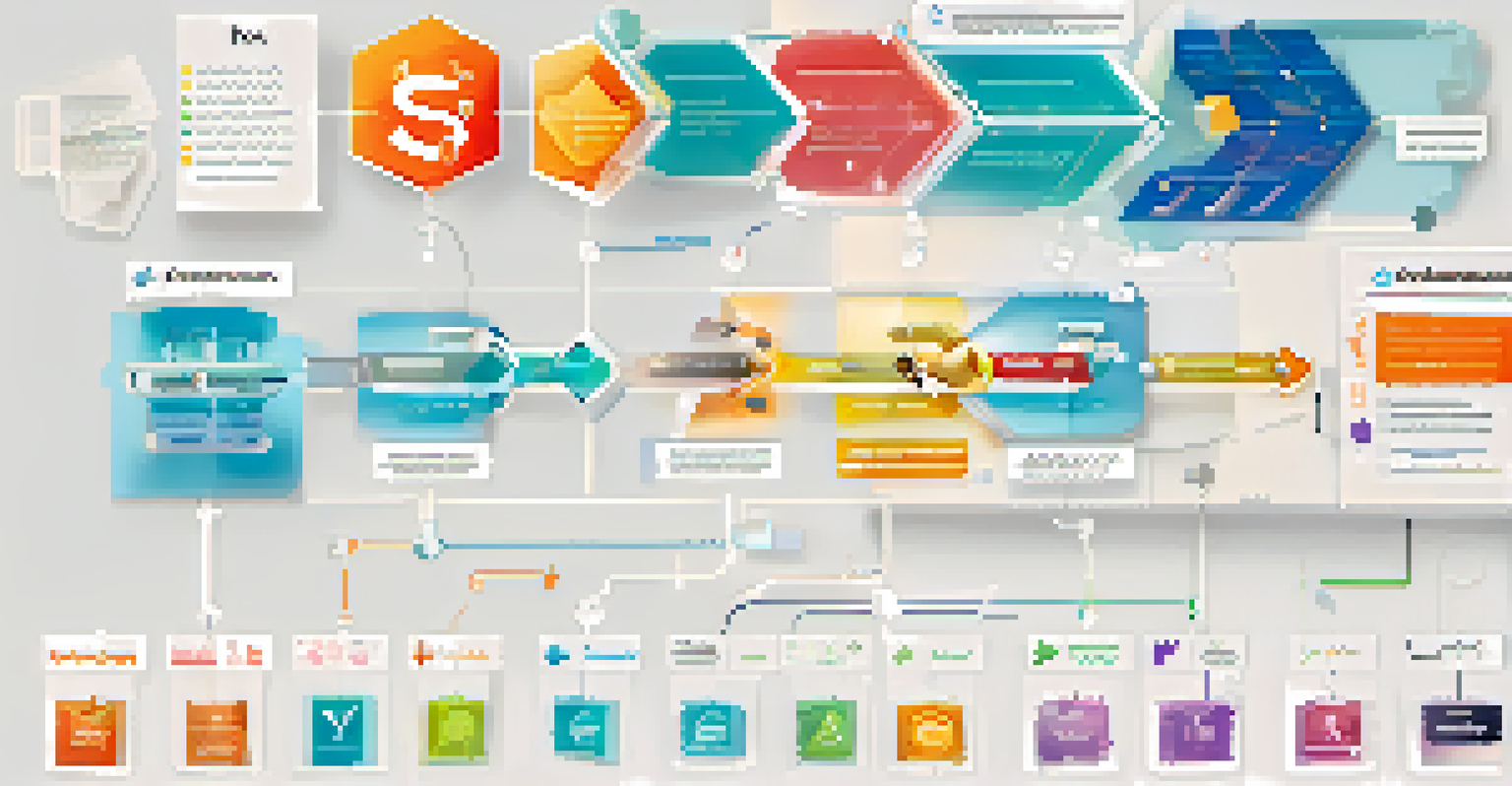Exploring the Types of Synthetic Assets on Ethereum

What Are Synthetic Assets and Their Purpose?
Synthetic assets are financial instruments that mimic the value of real-world assets. They are built on blockchain platforms like Ethereum, allowing for greater accessibility and efficiency. These assets can represent anything from fiat currencies to commodities, enabling users to gain exposure without owning the actual asset.
Synthetic assets allow us to trade and invest without the logistical hurdles of physical assets.
One of the primary purposes of synthetic assets is to provide liquidity in markets that might otherwise be inaccessible. For instance, if someone wants to invest in gold but lives in a region where it's challenging to buy or store physical gold, synthetic assets can bridge that gap. They offer a way to trade and invest without the logistical hurdles.
Additionally, synthetic assets can be used for hedging or speculation. Investors can protect themselves against market volatility or take calculated risks based on their predictions. This versatility makes synthetic assets a valuable tool in the modern financial landscape.
The Role of Decentralized Finance (DeFi) in Synthetic Assets
Decentralized Finance, or DeFi, plays a crucial role in the creation and management of synthetic assets. By removing intermediaries, DeFi platforms allow users to trade assets directly on the blockchain, ensuring transparency and security. This shift democratizes access to financial products and services.

In the DeFi ecosystem, synthetic assets often interact with various protocols to enhance their functionality. For example, users can leverage collateralized debt positions (CDPs) to mint new synthetic assets, creating a seamless experience for asset creation and trading. This interconnectedness fosters innovation and expands the possibilities for asset management.
Synthetic Assets Enhance Accessibility
Synthetic assets provide investors access to various markets without the need for physical ownership, democratizing finance.
Moreover, DeFi platforms provide users with the ability to earn yields on their synthetic assets through lending or liquidity provision. This not only enhances the utility of synthetic assets but also encourages greater participation in the DeFi space, ultimately benefiting the entire ecosystem.
Different Types of Synthetic Assets Available on Ethereum
On Ethereum, you can find a variety of synthetic assets catering to different market needs. Some popular categories include synthetic currencies, commodities, and indices. Each type serves a unique purpose, allowing users to diversify their portfolios and access different markets.
The future of synthetic assets on Ethereum is not just about innovation; it's about democratizing access to financial opportunities.
For instance, synthetic currencies can be pegged to fiat currencies like USD or EUR, offering a stable investment option in the volatile crypto market. Meanwhile, synthetic commodities allow users to invest in assets like oil or gold without the need to handle the physical product. This flexibility attracts a broader range of investors.
Additionally, synthetic indices provide exposure to a basket of assets, allowing for a more diversified investment strategy. By investing in synthetic indices, users can reduce risk while still participating in the potential upside of various markets, making them an appealing choice for many.
How Synthetic Assets Are Created on Ethereum
The creation of synthetic assets on Ethereum typically involves smart contracts, which are self-executing contracts with the terms of the agreement directly written into code. This process ensures that synthetic assets are created transparently and securely. Users can mint new assets by locking up collateral in these smart contracts.
For example, a user may want to create a synthetic asset representing the price of Bitcoin. They would deposit a certain amount of Ethereum as collateral into a smart contract. The contract then issues the corresponding amount of synthetic Bitcoin, which the user can trade or utilize within the DeFi ecosystem.
DeFi Powers Synthetic Asset Trading
Decentralized Finance (DeFi) enables secure, direct trading of synthetic assets on the blockchain, removing intermediaries.
It's important to note that the value of synthetic assets is often derived from an underlying asset, and mechanisms like oracles are used to ensure accurate pricing. Oracles are third-party services that provide real-time data to the blockchain, enabling synthetic assets to reflect market conditions accurately.
The Benefits of Using Synthetic Assets
Synthetic assets offer numerous benefits that make them appealing to investors. One of the most significant advantages is the ability to gain exposure to various assets without the need for ownership. This allows for greater flexibility and diversification in investment strategies.
Another benefit is the accessibility that synthetic assets provide. With just an internet connection and a digital wallet, anyone can access these assets, regardless of their location. This democratization of finance empowers individuals who may have been excluded from traditional financial markets.
Finally, synthetic assets can enhance trading opportunities. Traders can use them to hedge against market risks or speculate on price movements, potentially leading to greater profits. This versatility and potential for profit make synthetic assets an attractive option for both novice and experienced investors.
Risks and Challenges of Synthetic Assets
While synthetic assets offer many benefits, they also come with risks and challenges that investors should be aware of. One significant risk is the potential for smart contract vulnerabilities. If a bug or exploit is discovered in the code, it could lead to loss of funds for those using the synthetic asset.
Another challenge is the reliance on oracles for accurate pricing. If an oracle provides incorrect data, it could affect the value of synthetic assets and lead to unintended consequences for investors. This dependency highlights the importance of choosing reliable oracles when engaging with synthetic assets.
Understanding Risks in Synthetic Assets
Investors must be aware of potential risks, such as smart contract vulnerabilities and reliance on accurate pricing from oracles.
Lastly, regulatory uncertainties surrounding synthetic assets can pose risks as well. As governments and financial institutions continue to grapple with how to classify and regulate these assets, investors may face a shifting landscape that could impact their investments. Staying informed about regulatory developments is crucial for anyone looking to invest in synthetic assets.
The Future of Synthetic Assets on Ethereum
The future of synthetic assets on Ethereum looks promising, with continued innovations and growth in the DeFi space. As more users recognize the benefits of synthetic assets, we can expect increased adoption and new use cases to emerge. This could lead to an even richer ecosystem for investors.
Moreover, advancements in technology, such as improved scalability solutions for Ethereum, may enhance the performance and accessibility of synthetic assets. The Ethereum network is undergoing significant upgrades, including the move to Ethereum 2.0, which aims to address issues like high gas fees and transaction times.

As the market matures, we may also see more regulatory clarity surrounding synthetic assets. This could encourage traditional investors to enter the space, further legitimizing synthetic assets as a viable financial instrument. Overall, the potential for synthetic assets on Ethereum is vast, and their evolution will be closely watched by the financial community.